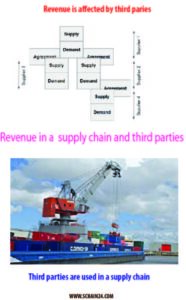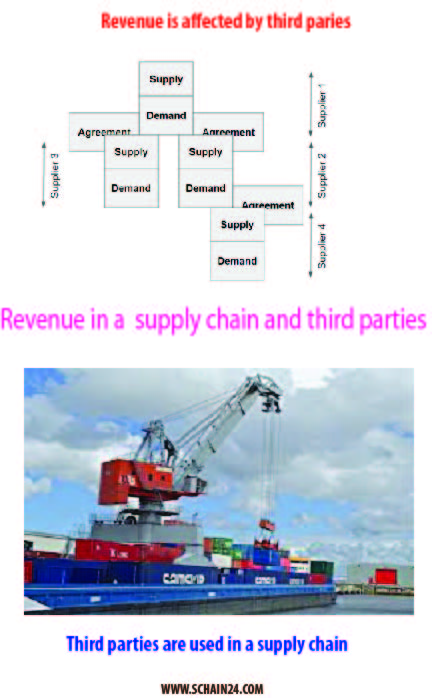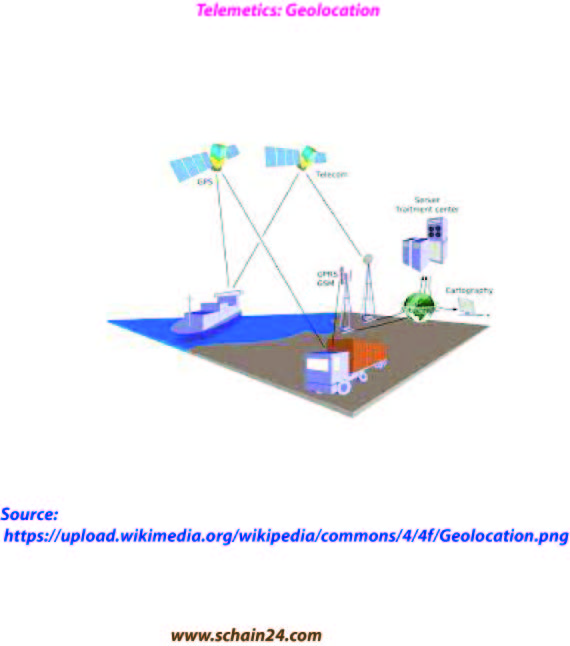Abstract
Carrying out a thorough third-party audit not only provides the necessary regulations, but it also helps mitigate against reputational financial risk and data-related damage. It is required to be careful about various governmental embargo situations: Third-party suppliers and logistic service providers should prevent themselves from buying from or selling to anyone on the relevant restricted company lists maintained by various governments, such as Australia, Canada, the UK, and the US. To increase the profit margin Supply Chain Managers must use all the levers available, including price. The third type of approach he can adopt is in high demand season, he can take a lower price, and in low demand season, he can take a higher price.
Keywords: Financial risk, Revenue, supply chain strategy.

Introduction
Among basic supply issues that enhance the supply chain value revenue is one of them. It helps supply chain strategy. On the other hand, we use third party to help our supply chain that we can’t in our supply chain with our own resources. But these third parties sometimes pose some threats and risks to our supply chain.
The Supply and Demand situation
While altering the inventory and capacity, can eventually change the available supply. Advertising and marketing can be used to increase demand. Other levers, such as pricing can be used to increase profits by better matching supply and demand. Revenue Management is the use of pricing to increase profit, although supply is limited in a supply chain asset. Supply Chain assets are available in the form of capacity and inventory. Capacity assets provide production, storage, and transportation. Inventory assets involve product availability.
The Profit Margin
To increase the profit margin Supply Chain Managers must use all the levers available, including price. The basic role of revenue management is to increase profit. A more traditional view is that firms have to reinvest or eliminate assets to reduce supply and demand imbalance. When companies’ growth possibility increases the firm builds new capacity. When decreased they shut down some capacity. Ideas from revenue management suggest that firstly managers should use pricing as a lever, then they can proceed with the increase or eliminate assets.
An Example of a pickup van provider
We may consider the example of a pickup and delivery company that has 15 numbers pick-up vehicles. They can take a few different approaches to use pricing as a lever for balancing supply and demand. In case, he has surplus vehicles, he can take some measures to advertise his delivery system. But he can do much more. He can charge a lower price who book in advance and he can take a higher price from those who ask for a pick-up van at the last minute. The third type of approach he can adopt is in high demand season, he can take a lower price, and in low demand season, he can take a higher price. This is nothing but a strategy based on product availability, customer demand, etc. On the other hand, this is a strategy that results in higher supply chain profit than the price for the whole duration of the sales season.
Revenue Management strategies
All of these above-mentioned strategies that use differential pricing are important levers to maximize supply chain earnings. These strategies are used based on customer segment, timing, and product or capacity availability. The impact on supply chain performance can be significant. These strategies are applied in situations, when (a) in different segments, the value of the product varies. Demand is different in the sales season. Products are usually sold in bulk proportion and on the spot also. Airline seats are a good example of this kind of market. An airline can extract a higher price from the business traveler. As this policy is applied this airline can earn more. More than an airline, that charges the same price to all travelers.
Long-term and spot market customers
Every unit and every product of capacity can be sold both in the bulk and in the spot market. Bulk selling may be convenient. But it is usually needed to sell at a lower price. On the other hand, spot market sales bear higher prices. Revenue management increases profits by finding the correct balance between bulk price and spot market selling. Revenue management can have a similar impact on all stages of the supply chain that satisfies the above-mentioned condition identified before. Prices must be set with a barrier that the segment willing to pay a higher price is not able to pay the lower price. The amount of the assets reserved for the higher price segment is such that it equals the lower price segment.
Revenue-related risks and problems
Usually, a third-party supplier’s financial capability can affect the business of the buyer, who has contact with them. The business world is mostly small businesses inhabited. Even in the USA, 99% of the businesses are small businesses. In the background, they may have demeaning, or problems with principals. Even big third-party companies sometimes falling financial bankruptcy, e.g. Hanjin Shipping had fallen into financial demise in 2017. A third party should be cost-efficient for a business. The third-party logistic company’s financial aspects are characterized by two types. They are either resource suppliers e.g., asset and management based, integration service-based, or product suppliers, such as spare parts, and final product suppliers. Balance sheets and access to capital resources are important criteria for third-party suppliers.
Bribery and corruption-related issues
Too many organizations are unintentionally open to risks such as bribery and corruption from their suppliers, distributors, logistic service providers, agents, and other third parties. Carrying out thorough third-party audits not only provides the necessary regulations, but it also helps mitigate against reputational financial risk and data-related damage. It is required to be careful about various governmental embargo situations: Third-party suppliers and logistic service providers should prevent themselves from buying from or selling to anyone on the relevant restricted company lists maintained by various governments, such as Australia, Canada, the UK, and the US. Various departments of the US government, for example, maintain lists of countries, companies, and someone that constitute potential terrorist terror, such as the US Exchequer Department’s specially designated nationals listing. Atomic number 63 maintains a similar list of designated entities and individuals called the EU Consolidated List of Financial Authorization Target area, which applies to all EU states. Once you agree on a liability limit, you should also make sure the third party has the means to pay it if something does happen. It is required to be careful about the partner’s partner: Depending on how many subcontractors your third-party supplier/partner body of the piece of works with, you may want to include a provision that gives you the right to approve the subcontractor that works on your project and require them to provide yearbook updates on who that sub-contractor is. If you know who your supplier’s providers are will help you manage your risk. Create a detailed loss program. The agreement will often stipulate that the passing plan will be written within the early execution of the contract, but later, when something goes wrong and you go looking for it, International Relations and Security Networks are there. If they work with subcontractors, it may be more feasible to advise you whenever a subcontractor is involved in legal issues.
Conclusion
While we can use revenue techniques to make a profitable supply chain, we should heed third-party supply chain risks regarding revenue issues. We should have the proper knowledge to handle operations and supply chain management as supply chain managers. The strategies should be decided in a well-thought manner.
Further reading:
1. Christopher, Martin and Peck, Helen. (2004).” BUILDING THE RESILIENT SUPPLY CHAIN”.International Journal of Logistics Management, Vol. 15, No. 2, pp1-13, 2004
2. Talluri, K., and van Ryzin, G. (1999) Revenue Management: Research Overview and Prospects. Transportation Science 33:233-256.
3.https://youtube.com/shorts/QXK58Kdnisk?feature=share






